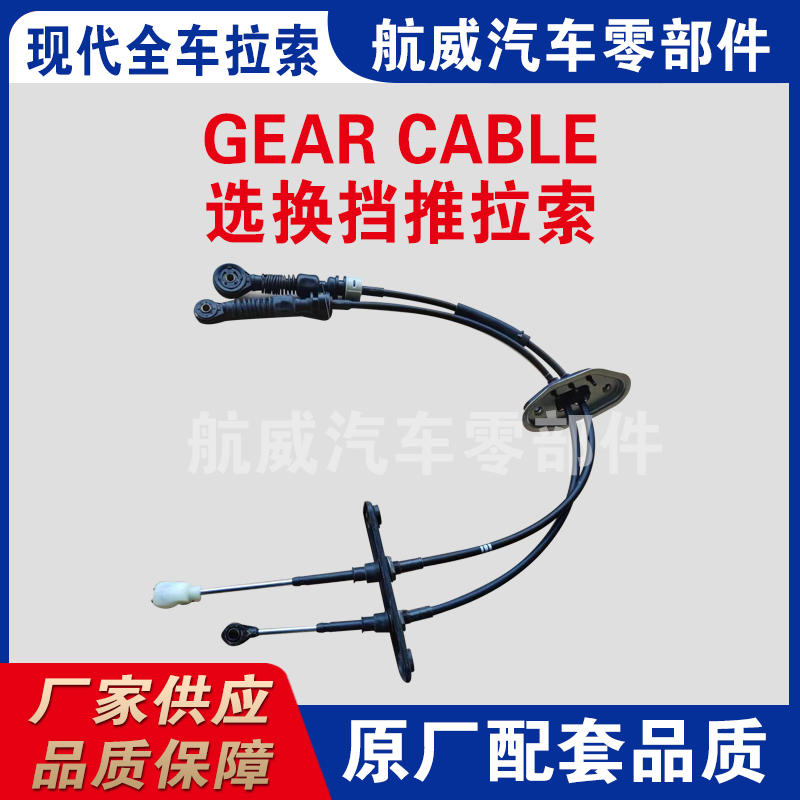accelerator cable
Understanding Accelerator Cables Function, Types, and Maintenance
The accelerator cable plays a crucial role in the operation of an internal combustion engine vehicle, acting as a vital link between the accelerator pedal and the throttle body. This seemingly simple component is integral to the vehicle’s performance, influencing how quickly and efficiently the engine responds to the driver’s commands. In this article, we will delve into the function of the accelerator cable, explore different types, and discuss maintenance practices to ensure its longevity and optimal performance.
The Function of Accelerator Cables
At its core, the accelerator cable is responsible for transmitting the driver’s intention to accelerate to the engine’s throttle. When the driver presses down on the accelerator pedal, the cable pulls on the throttle body, opening it up to allow more air and fuel into the combustion chamber. This mixture is essential for increasing engine power and, ultimately, speeding up the vehicle.
In modern vehicles, many have transitioned to electronic throttle control systems, which utilize sensors and actuators rather than a mechanical cable. However, the principle remains the same translating driver input into engine response. For older models and some current models, the physical accelerator cable remains an important component of the vehicle’s drivetrain.
Types of Accelerator Cables
There are generally two types of accelerator cables mechanical and electronic
.1. Mechanical Accelerator Cables These are the conventional accelerator cables used in older vehicles. They consist of a steel wire cable housed within a flexible outer casing. The cable experiences tension when the accelerator pedal is pressed, pulling directly on the throttle mechanism. The simplicity of this system allows for reliable and straightforward repairs, making it a favorite among vintage car enthusiasts.
accelerator cable

2. Electronic Throttle Control (ETC) In most modern vehicles, the mechanical accelerator cable has been replaced by electronic systems. These systems utilize sensors connected to the accelerator pedal and electronically controlled throttle plates. While these systems can offer better fuel efficiency and more precise engine control, they can also present more complex diagnostic and repair challenges.
Maintenance of Accelerator Cables
Maintaining the accelerator cable is essential to ensure reliable vehicle performance. For mechanical cables, regular inspections for fraying, kinking, or corrosion can help catch issues early. The presence of rust or significant wear can compromise the cable's function, leading to sluggish or erratic acceleration.
Lubrication is also vital; using a suitable lubricant on the cable can prevent sticking and ensure smooth operation. In contrast, electronic throttle systems need less routine maintenance, but it's still essential to keep sensors and connections clean and free from obstruction.
If a driver experiences sudden loss of throttle response or a sticking accelerator, it is crucial to address these issues immediately. Such scenarios can pose significant safety risks and often require professional evaluation. For mechanical cables, replacing the entire unit may be necessary, while electronic systems might require sensor calibration or component replacement.
Conclusion
In summary, while the accelerator cable may seem like a minor element in the complex system of a vehicle, its importance cannot be overstated. Whether found in older mechanical systems or as part of modern electronic throttle controls, it plays a vital role in how a vehicle responds to driver input. Understanding the types of cables available and maintaining them appropriately is crucial for any vehicle owner. By taking proactive steps to care for the accelerator cable, drivers can ensure smoother performance and enhance overall vehicle safety. Recognizing the signs of wear and knowing when to seek professional help can save time, money, and potentially avert dangerous situations on the road.
-
Workings of Clutch Pipe and Hose SystemsNewsJun.04,2025
-
The Inner Workings of Hand Brake Cable SystemsNewsJun.04,2025
-
The Secrets of Throttle and Accelerator CablesNewsJun.04,2025
-
The Hidden Lifeline of Your Transmission Gear Shift CablesNewsJun.04,2025
-
Demystifying Gear Cables and Shift LinkagesNewsJun.04,2025
-
Decoding Clutch Line Systems A Comprehensive GuideNewsJun.04,2025
